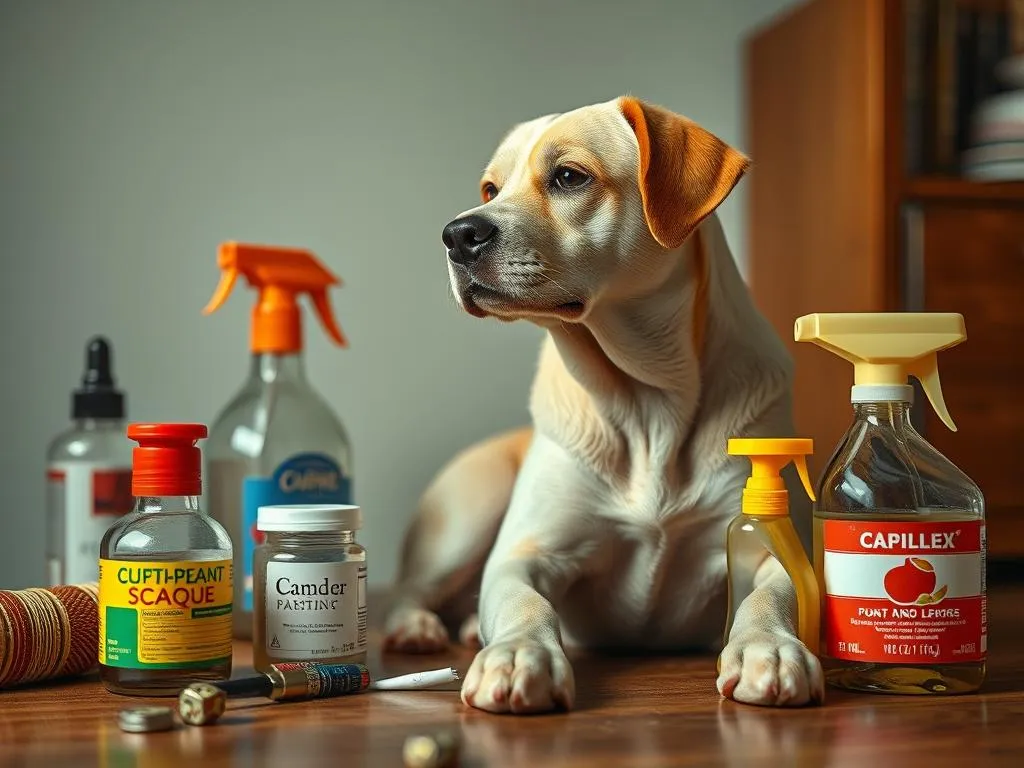
Introduction
Ensuring the health and safety of our furry companions is a responsibility that cannot be taken lightly. Dog health care encompasses a variety of aspects, including nutrition, exercise, grooming, and environmental safety. One critical area that many pet owners overlook is the presence of household items poisonous to dogs.
Being aware of these hazardous items is paramount to preventing potential poisoning incidents. According to the ASPCA’s Animal Poison Control Center, they receive over 200,000 calls each year regarding pet poisoning cases, with dogs making up a significant proportion of these incidents. The consequences of poisoning can be severe, leading to health complications or, in extreme cases, fatality.
In this article, we will explore the various household items poisonous to dogs, discuss how to create a safe environment, and provide vital information on what to do if your dog is suspected of poisoning.
Understanding Dog Poisoning
What is Dog Poisoning?
Dog poisoning occurs when a dog ingests a toxic substance, leading to harmful effects on its health. This can range from mild gastrointestinal upset to more severe reactions, including organ failure. Common symptoms of poisoning in dogs include vomiting, diarrhea, lethargy, seizures, and in severe cases, coma or death.
Why Dogs are Vulnerable
Dogs are naturally curious creatures, often exploring their environment with their mouths. This curiosity can lead them to ingest items that are potentially harmful. Factors such as a dog’s size, age, and metabolism play a crucial role in their vulnerability to toxins. For instance, smaller dogs may be more susceptible to the effects of certain poisons than larger breeds.
Importance of Immediate Care
If you suspect that your dog has ingested a poisonous substance, immediate action is essential. Time is of the essence, and the quicker you respond, the better the chances of recovery. It is advisable to have a plan in place, including emergency contact numbers for your veterinarian or a local pet poison control hotline.
Common Household Items Poisonous to Dogs
Food Items
Chocolate
Chocolate is one of the most well-known household items poisonous to dogs. Theobromine, a compound found in chocolate, is toxic to dogs and can lead to symptoms such as vomiting, increased heart rate, and seizures. Dark chocolate and baking chocolate contain higher levels of theobromine than milk chocolate, making them more dangerous.
Grapes and Raisins
Grapes and raisins are surprisingly toxic to dogs, although the exact reason remains unclear. Even small amounts can lead to kidney failure, with symptoms including vomiting, lethargy, and loss of appetite.
Onions and Garlic
Onions and garlic contain thiosulfate, which is harmful to dogs. These foods can lead to oxidative damage to red blood cells, causing anemia. Symptoms may include weakness, vomiting, and pale gums.
Xylitol
Xylitol is a sugar substitute found in many products, including gum, candies, and some peanut butter brands. For dogs, xylitol can cause a rapid release of insulin, leading to hypoglycemia (low blood sugar). Symptoms include vomiting, lethargy, and seizures.
Macadamia Nuts
Macadamia nuts are also toxic to dogs, causing symptoms such as weakness, tremors, and hyperthermia. Even small amounts can be harmful, so it’s best to avoid giving your dog any nuts.
Cleaning Supplies
Bleach and Ammonia
Common household cleaners like bleach and ammonia can be incredibly dangerous to dogs. Exposure can lead to respiratory issues, vomiting, and irritation of the skin and eyes. Always store these substances out of reach and use them in well-ventilated areas.
Disinfectants and Antifreeze
Disinfectants, while essential for keeping our homes clean, can pose serious risks to dogs if ingested. Antifreeze is particularly dangerous due to its sweet taste, which can lure dogs to consume it. Symptoms of antifreeze poisoning include vomiting, increased thirst, and lethargy.
Laundry Detergents
Laundry pods and liquid detergents can cause chemical burns and gastrointestinal distress if ingested by dogs. It’s crucial to store these items securely and keep them out of reach.
Plants and Herbs
Common Toxic Plants
Many common household plants can be toxic to dogs. Examples include lilies, azaleas, and philodendrons. Ingesting these plants can lead to symptoms ranging from mild gastrointestinal upset to severe organ failure.
Safe vs. Toxic Herbs
While some herbs can be beneficial for dogs, it’s essential to distinguish between safe and toxic varieties. Herbs like basil and parsley are generally safe, while others like chives can be harmful.
Human Medications
Over-the-Counter Drugs
Many common over-the-counter medications, such as ibuprofen and acetaminophen, can be extremely harmful to dogs. Symptoms of poisoning can include vomiting, lethargy, and organ failure.
Prescription Medications
Human prescription medications can also pose significant risks. Always store medications securely and keep them out of reach of pets to prevent accidental ingestion.
Miscellaneous Toxic Items
Batteries
Batteries can be particularly dangerous if ingested, as they can cause chemical burns and gastrointestinal blockages. Symptoms may include drooling, vomiting, and signs of pain.
Essential Oils
Certain essential oils, such as tea tree oil, can be toxic to dogs. Symptoms of poisoning may include vomiting, lethargy, and tremors. Always consult a veterinarian before using essential oils around your pets.
How to Dog-Proof Your Home
Creating a Safe Environment
One of the best ways to ensure your dog’s safety is to create a dog-proof environment. Organize and store toxic items securely and use childproof locks on cabinets containing harmful substances. Keep potentially dangerous items out of reach and consider using barriers to restrict access to certain areas.
Educating Family and Visitors
It’s essential to educate family members and visitors about the potential dangers that exist within your home. Establish clear house rules regarding food and dog interactions, and ensure that everyone is informed about which items are harmful.
Regular Health Monitoring
Routine check-ups with a veterinarian are crucial for maintaining your dog’s health. Regular monitoring can help catch potential health issues before they become serious. Be vigilant about any unusual behavior or symptoms, as early detection can be lifesaving.
What to Do in Case of Poisoning
Recognizing Symptoms
Recognizing the symptoms of poisoning can be vital for your dog’s health. Common symptoms to look out for include:
- Vomiting
- Diarrhea
- Lethargy
- Seizures
- Loss of coordination
- Difficulty breathing
Immediate Actions to Take
If you suspect that your dog has ingested a poisonous substance, the first step is to remain calm. Assess the situation and try to identify what your dog has consumed. Contact your veterinarian or a pet poison control hotline immediately for guidance on the next steps to take.
Treatment Options
Treatment for poisoning can vary depending on the substance ingested. Your veterinarian may induce vomiting, administer activated charcoal, or provide supportive care, such as intravenous fluids. Follow-up care and monitoring are crucial for ensuring a full recovery.
Resources and Support
Veterinary Contacts
Having a reliable veterinarian’s contact information readily available is essential for any dog owner. Keep a list of emergency veterinary services on hand in case of a poisoning incident.
Poison Control Resources
Familiarize yourself with pet poison control hotlines and websites. These resources can provide immediate advice and support if your dog ingests a toxic substance.
Community Support
Connecting with local pet owner groups can provide valuable support and advice regarding dog health care. Sharing experiences and tips can help create a safer environment for all pet owners.
Conclusion
In conclusion, being aware of household items poisonous to dogs is an essential aspect of responsible dog ownership. By taking proactive steps to dog-proof your home and educating yourself and others about potential hazards, you can help ensure the safety and health of your beloved pet. Always be vigilant and prepared to act quickly in case of poisoning, as timely intervention can make a significant difference in your dog’s outcome. Remember, your furry friend relies on you to keep them safe and healthy!









